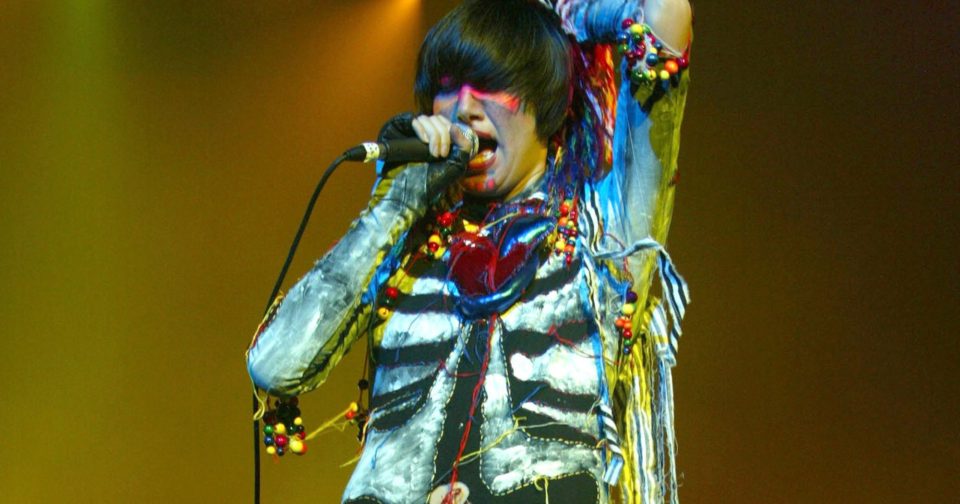Ever since age 12, when I nicked a copy of Come As You Are: The Story of Nirvana, I’ve been a gluttonous consumer of rock and roll histories. A good book has the following key elements: ambitious young dreamers start making music, get some success, then dramatically struggle with inflated egos, wild substance abuse and music industry perfidy. And then either prevail or lose it completely. Sometimes it’s a difficult reading about the flaws of people you greatly admire. I’m still gutted by a Lou Reed biography which exhaustively detailed how he was a complete bastard. And I will even devour works about people whose music I couldn’t care less about. I’m not too proud to admit that I’ve read The Dirt: The Oral History of Motley Crue no less than three times, just because its portrait of 80s heavy metal depravity is so absurd. Their bassist overdosed, was declared dead and resuscitated, told the doctors to fuck off and went home and overdosed again – all on the same day!
Fortunately for me, Lizzy Goodman’s massive Meet Me In The Bathroom: Rebirth and Rock and Roll is about bands I care very much about. The book follows the explosive rise of the New York bands who culturally dominated rock music in the early 2000s – The Strokes, Yeah Yeah Yeahs, LCD Soundsystem, Interpol, TV On The Radio, Liar etc. I was so excited when I found out this book was coming out, because these were the bands that soundtracked my late teens and early twenties. And this wasn’t just a musical influence either. At one point I had the fashion too, with the Converse All Stars, the skinny jacket and the delusional belief that being really greasy and chain-smoking was cool. That style was championed by The Strokes, whose meteoritic rise to fame in 2001 galvanized a wave of bands making stylish, punk-inspired music which contrasted sharply with the cretin nu-metal of the day. Goodman exhaustively details the antics of bands like Interpol, who dressed like morticians but lived like Caligula. As their drummer Sam Fogarino puts it, “yes, I was worried – it was like these guys are not just cokeheads, they’re waking up with beers in their hands”. But this climate of hedonism also fuelled creativity. James Murphy overcame a lifetime of self-doubt and failure while dancing on ecstasy – “it was like he just flipped a switch and decided to start winning”. With his label DFA and his band LCD Soundsystem he pioneered a fusion of punk ethics and dance production, becoming an unlikely rock star while well into his thirties. But LCD’s rise also saw the toxic fall of his friendship with his collaborator Tim Goldsworthy, who hisses “I literally could have stabbed him in the throat quite easily. I had weird reoccurring dreams of Game of Thrones style deaths for him”.

The New York bands were a rapid inspiration to an “international degenerate underground” like the British Libertines, whose singer Pete Doherty makes a memorable appearance trying to steal credit cards from The Strokes. Within the city itself, Goodman argues that there was a noticeable split between “bands who wanted to do blow with waitresses at three in the morning“ and more personally sedate types like TV On The Radio, The Dirty Projectors and Grizzly Bear. But despite the book showing the usual struggles with fame and narcotics it ends on a relatively wholesome note, with no one dying and many of the featured bands continuing to release music. In fact, LCD Soundsystem have just released the excellent American Dream, giving them their first Billboard Number One in the US.
The darker aspect of the book comes not from personal excess but the brutal forces of the market. Bands unwittingly aided in gentrification, with the image of cool they reflected being used to push real estate to astronomical prices in New York. TV On The Radio had to abandon their studio in Brooklyn due to rent increases, with singer Tunde Adebimpe observing “we warmed it up for fuckers”. The contradictions of privilege were baked into the scene from the off, with The Strokes famously meeting at prep schools for wealthy reprobates. Two decades later, hipster lead gentrification has made the urban life they eulogized incredibly difficult for young people without independent wealth. As Sam Wetherell recently argued this had a dire effect on rock music – “the working class music scene of a generation ago – Joy Division, Pulp, even The Beatles – has been replaced with the peevish aristocratic pomp of Mumford and Sons”.
The musical scene depicted in the book also suffered from an apolitical atmosphere, with the events of September 11th only encouraging many to party like the world was ending. A lot of the music retrospectively seems to come from a more frivolous time, where ecological collapse and geopolitical mayhem didn’t seem like everyday facts of life. The one exception was TV On The Radio, who were for a few years the most progressive, exciting rock band anywhere in the world. On their 2006 masterpiece Return To Cookie Mountain, they channeled apocalyptic dread into a sprawling songs about global warming, war and doomed relationships. Guitarist and producer Dave Sitek remembers “we couldn’t avoid talking about it… I was thinking about getting laid and now I’m thinking about dying in the fucking eternity”. That’s a sentiment that feels even more visceral in 2017.




















































